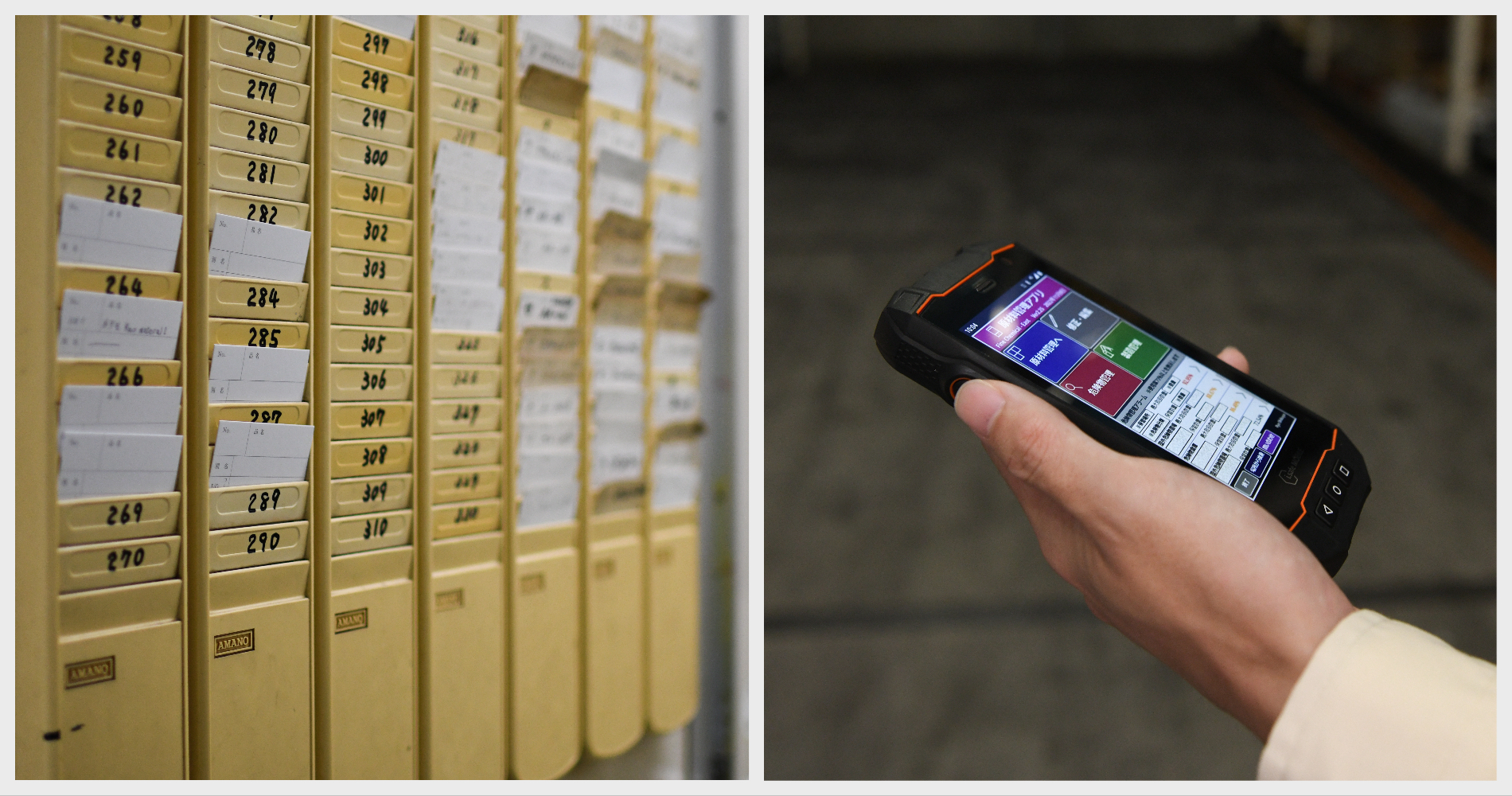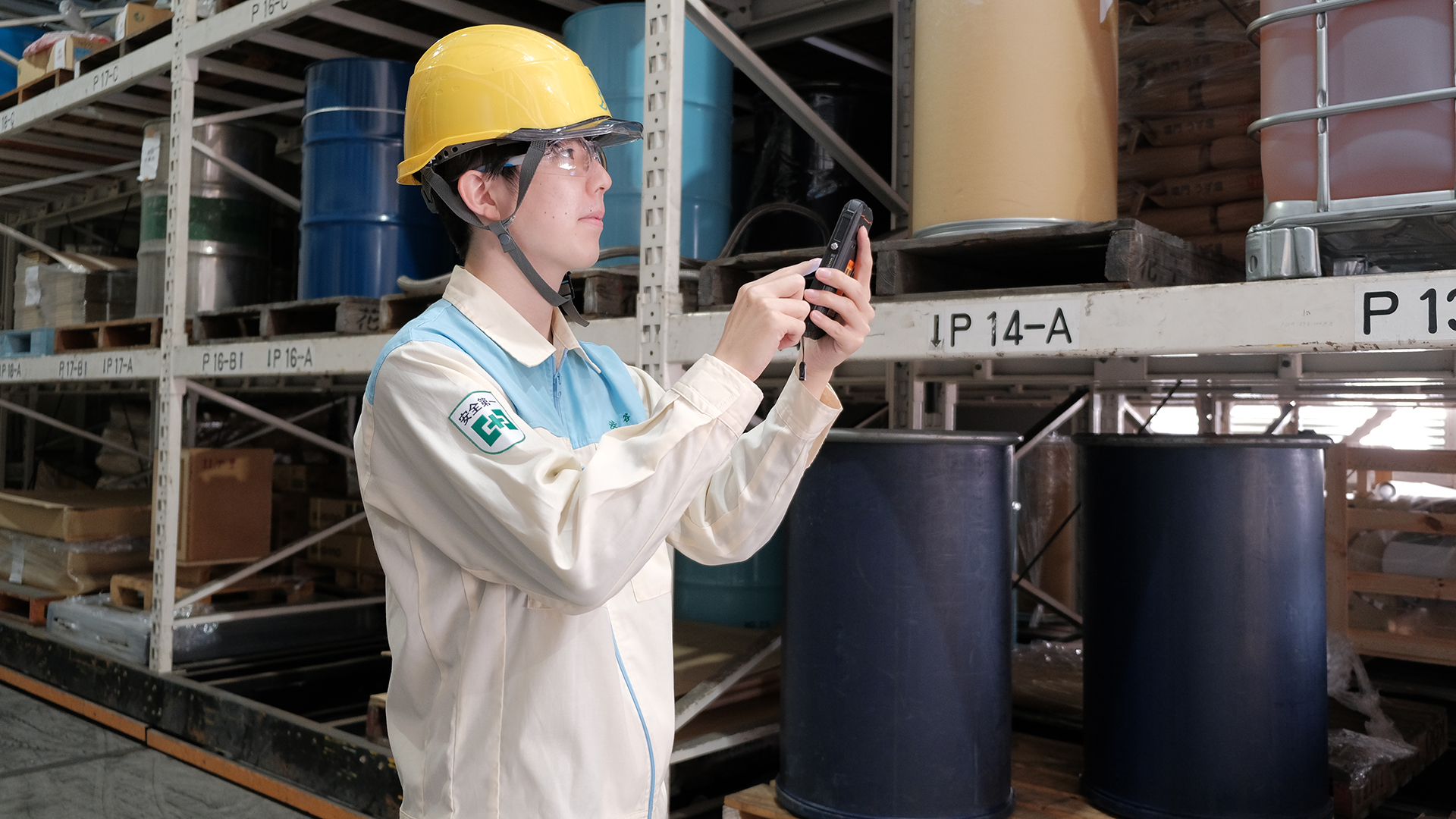Not long ago, employees on the production floor of the fine chemical department of the Kao production facility in Wakayama, Japan, were overrun with paper.
The chemical and cosmetics company has been in operation for more than a century, which means there’s a long history of analog processes. There was a form for everything, from inspection records to raw material management to hazardous chemical storage. Trying to find the right paper for the right procedure was both challenging and time-consuming.
“It was difficult to handle the information,” said Ryo Shibuya, a production worker in the chemicals department at Wakayama factory.
Kao is actively pursuing a digital transformation strategy throughout its facilities to help move the company forward. The supply chain management division at Kao has introduced these strategies at their factories, in training and throughout human resources.
As the senior manager of Kao’s technology development center, Shigeki Takemoto was eager to bring digital transformation to the shop floor. He used Microsoft Power Platform to learn about app development through Power Apps and thought the low-code development platform would be an ideal way for onsite personnel and engineers to easily improve operational efficiency in a short period of time.
Kao’s citizen developers have created more than 260 apps across the company’s 10 plants in Japan since it introduced Power Platform in that division in 2021. At the Wakayama facility, citizen developers created 59 apps.

“Within the manufacturing group at Wakayama we have tried to nurture the citizen developers,” Takemoto said through a translator. “We have trained a key user in each plant, who will serve as a promoter for this initiative and educate others who want to do the same. Additionally, we have established a support website to share our development story and it has been a great vehicle. Digital transformation is ongoing on the shop floor.”
Shibuya and co-worker Nahoki Fujita decided to try a better way to manage raw materials. Using Power Apps, they created an app to digitize more than 300 types of cards that contained the type, location, quantity and quality of raw materials. In some cases, the cards were difficult to understand because they were hand-written. If a card was lost or damaged, it slowed production as employees tried to address the problem.
As Shibuya and Fujita worked to develop the app, they were pleased that their supervisors immediately understood the importance of the project.
“This project was successful because of the cooperation we received,” Fujita said. “When we introduced the solution, we had to have time for learning. We had to stop some of our daily work to explain the purpose and meaning of the app. And all the people around us understood why that was important.”
The primary creation of the app fell to Shibuya, a chemistry major with no previous IT experience.
“I would recommend Power Platform to everyone,” he said. “I didn’t know anything about making an app, but I still could complete it.”
Once the app was launched, inventory management of the raw materials fully shifted to the app and resulted in an efficiency improvement of approximately 480 work hours. Additionally, the production facility was able to add new functions to manage the type and quantity of dangerous materials to the app that were not possible with the previous setup.
“In my department, people are using this app and the members are saying that it is indispensable,” Shibuya said.

The spirit of development has spread throughout the Wakayama facility, with employees participating in a development community that focuses on digital transformation work and recruiting others who may be interested in app creation.
“The person working on the production line often has an idea for improvement, so with this solution and tools, they now have the means to realize the improvement by themselves,” said Tatsushi Okumoto, who also works in the fine chemical department. “I think it is a powerful thing. We are trying to communicate this kind of information to people in other departments or factories, so they can learn.”
Moving forward, Kao continues to pursue opportunities for further digital transformation and expand use of Power Platform to its plants in other countries. Takemoto would like to utilize Power BI to visualize the massive amounts of data produced by the company, while Shibuya and Fujita are working on another app named Moon Chart, a production schedule management tool that allows employees to see what other people are working on in real-time.
“The popularity of Power Apps has prepared an environment for a layman like me to learn from scratch,” Fujita said. “That is really appreciated and I think it will be an essential skill.”
Top image: Employees Tatsushi Okumoto (left) and Nahoki Fujita explore the citizen developer app that helps track and organize raw material used by Kao in its production of chemicals and cosmetics. Photo courtesy of Kao.


